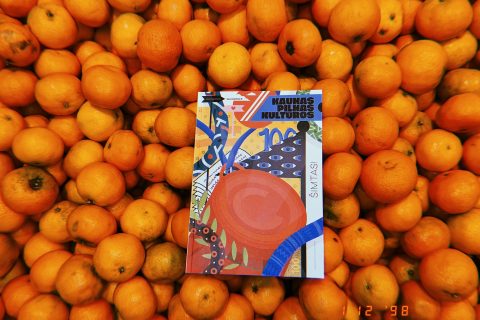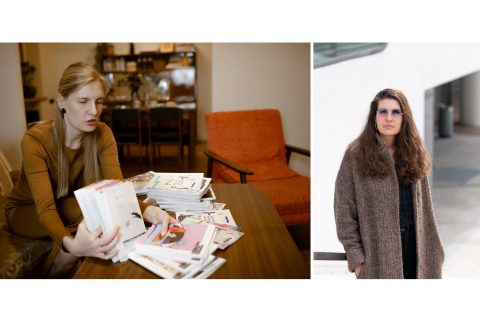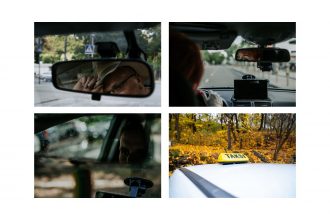Sometimes you meet a person, and their enthusiasm, passion, and flight of thought touches you and inspires you, whether you want it or not. This is what happened to me when under the pressure of my daily professional affairs, I met Kęstutis Cikanas through a mutual acquaintance. Kęstutis is a wood craftsman, teacher, and restorer, whose hands bring the old doors and windows of the city to new life. Therefore, when the opportunity arose to choose the interviewee for the 100th issue, I had to travel to Ežerėlis, Kaunas district, where his workshop is located.
It started with hobby groups
We will not learn much about the master’s personal life, except for a summary of one sentence, that his mother is from Aukštaitija, Anykščiai region, and his father is from Dzūkija. He immediately points out, “After all, this is about my profession, not me. And that professional activity started quite early. At the age of 5, I made my first product, a wooden bird feeder, and painted it green. I remember that model to this day, it was then that I realized I liked wood,” Kaunas resident said.
His parents were tolerant of the young man’s various activities, so metalworking files were soon turned into woodworking files at home. Later, he immersed himself in analog photography, which has now become a hobby, although there is still a lot of equipment in the basement.
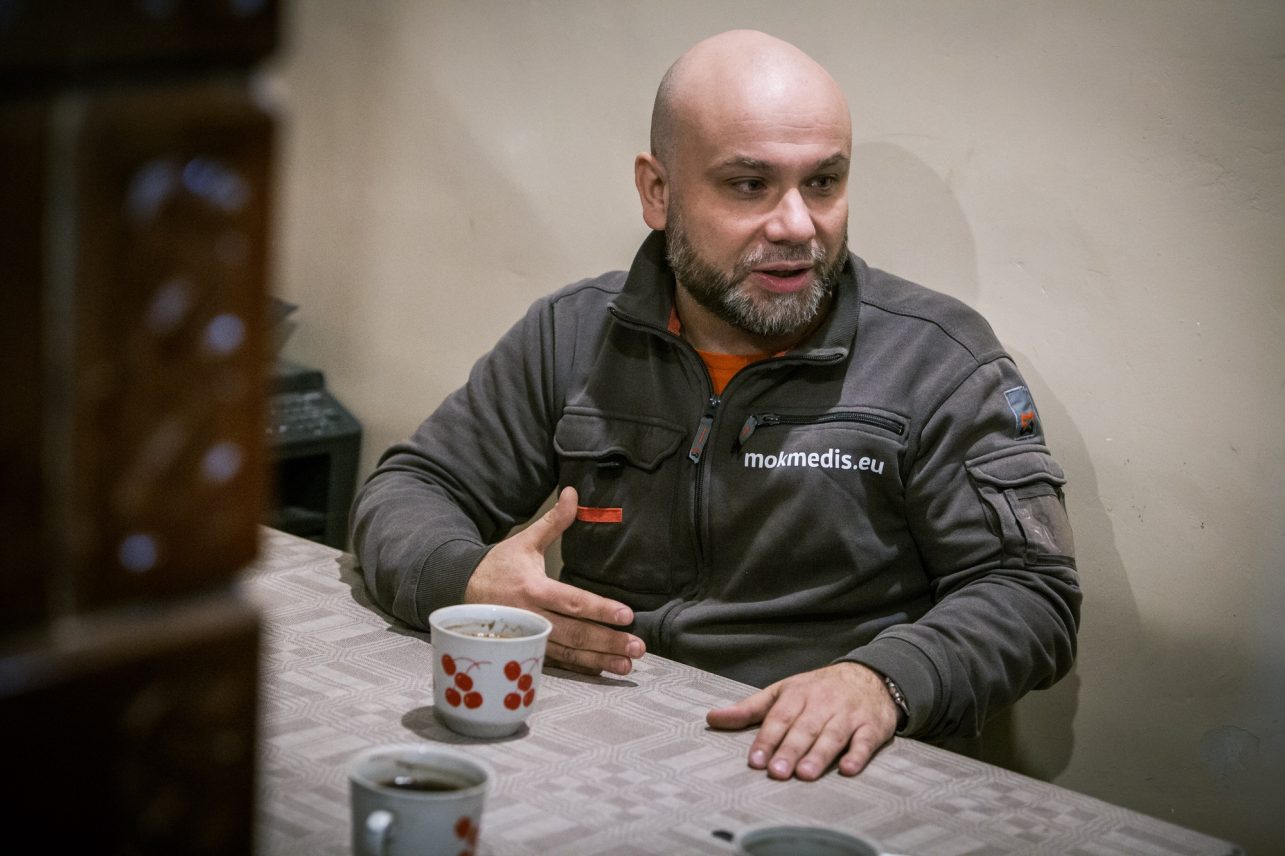
“There was a photography hobby group near my home, where the canteen of the 6th Fort is currently located. I attended it for 6 years, then I moved to the woodworkers next to T. Masiulis school – it was this huge center for extracurricular, informal activities. I engaged in woodturning there for a long while, even after I entered the vocational school,” Kęstutis, who is now a teacher himself, continues.
He stood out after discovering the activity he loved
K. Cikanas opens up about the fact that he had poor grades at school; he lacked motivation and concentration. When it was time to think about a professional path, after the 9th grade, he decided to choose a vocational school, where it was possible to complete the secondary education program as well. “Let me put it this way: it was a renaissance, a rebirth. I was very curious, I felt endless motivation, which has not subsided to this day. I entered the school in 1996. I didn’t know anyone there; it was a completely new environment for me. That school is still there, renovated and functioning,” the carpenter continues.
It was in that year that one of the first support packages reached the institution. The post-Soviet school of a country that had just reached its independence received a completely new lathe and new tools including electric Festo ones. As the interviewee says, it was, “unbelievable.”
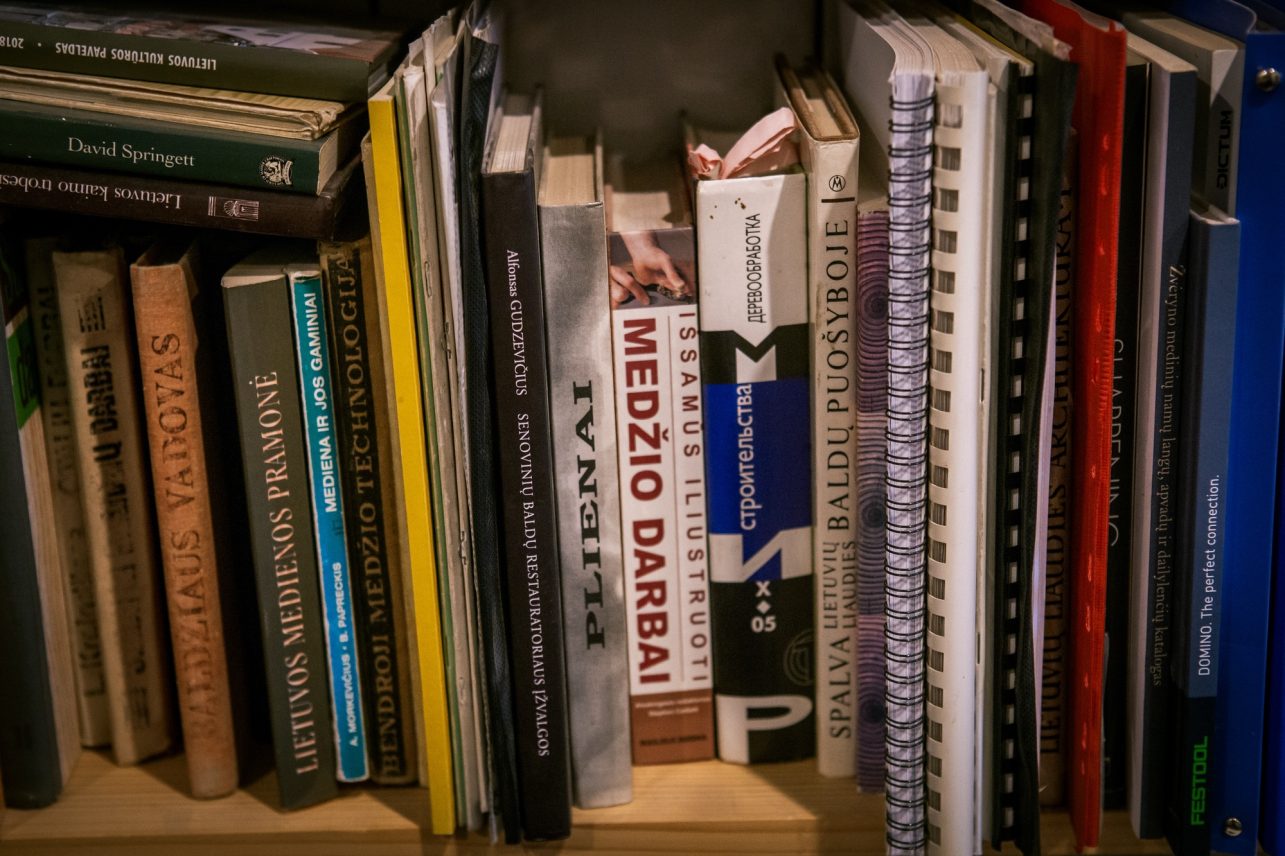
Kęstutis quickly became first in class. He says that it wasn’t easy: he had to fight because at that time all the stereotypes that surrounded vocational schools were still strong. Only his brother’s protection saved him from the pressure of his naughty classmates. Despite this, the teachers were respected by everyone. “We were still post-Soviet children, extremely dutiful, afraid of everything. It was impossible to not attend the practical training. The man we respected is still working there 42 years later. Now I am attending his students’ exams. The teachers were people that we looked up to, even though we were rascals,” the carpenter continues.
According to him, no one was exempted from anything. Even athletes who got there due to poor grades rather than a wish to become carpenters, were forced to make things specifically for sports. At that time, the school was really strict, no one wanted to be kicked out.
Why wood?
When asked why he chose wood instead of metal, K. Cikanas says he has no answer. Whether it’s God or fate, you can believe what you want, but someone put the famous master from Kaunas exactly where he belongs. And this is evident both from his works and from his decades-long passion.
“I often meet students of various ages who say they don’t know what they would like to do, they are experimenting, searching. Everyone is successful at different times. I just found my luck earlier; I never had any questions. And every year my excitement and projects only continue to grow,” the restorer adds.
Kęstutis says he’s very happy about it. It may not always be easy for his loved ones, but he tries to keep everyone happy. He jokes that this is why he is not moving to Ežerėlis, where he has now set up a workshop in the post-war kindergarten, because then the work would never end. it is better to return to Kaunas.
He might not have been great at school, but he is a magnificent teacher
Kęstutis received his first invitation to work as a teacher as soon as he finished vocational school and entered the newly formed college. However, at that time, he did not like the management or the structure, so he refused. After graduating from college, he received an offer a second time, only not from a vocational school, but from the administration of his college.
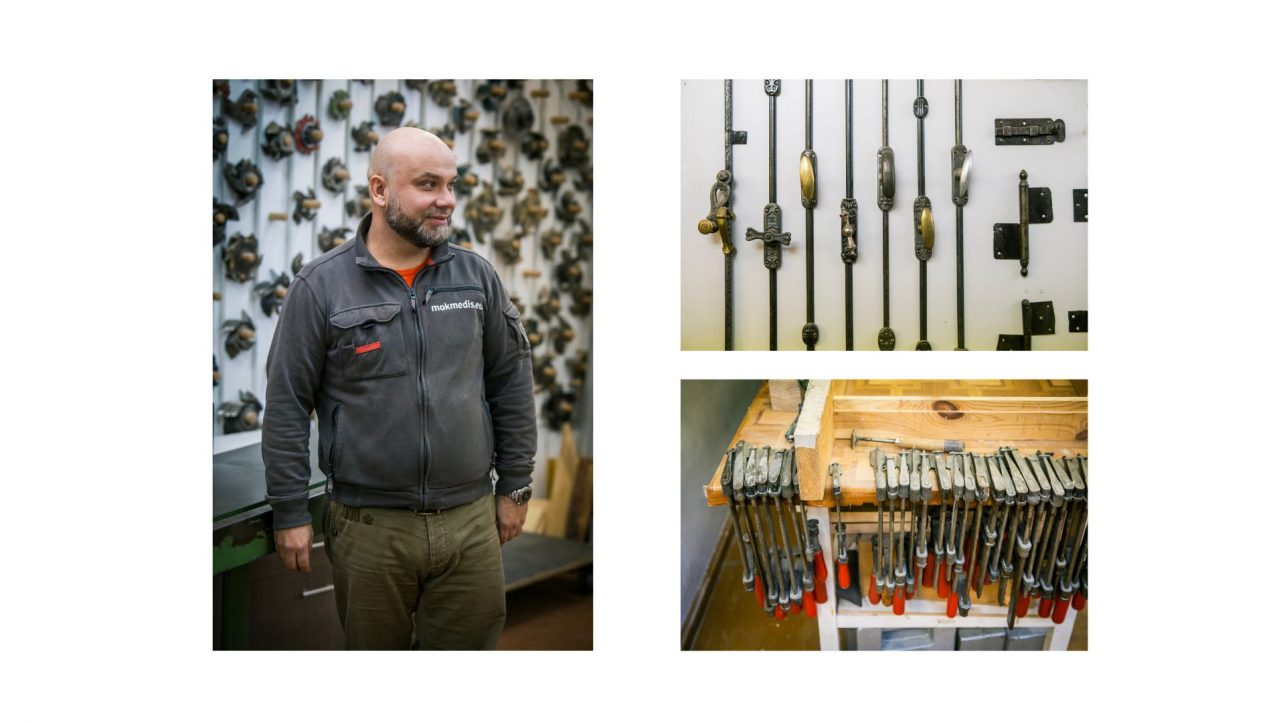
“They noticed that I am not only capable of working well but also talking nonstop. I did that for a year, I was a lab assistant, and then I was approached by Festool, one of the most important manufacturers of woodworking tools. When I saw their warehouse, I didn’t even need to be persuaded. Although it was not my field, they needed a person to paint cars,” K. Cikanas remembers.
Although the conditions were ideal, he did not work as a technical consultant for long. He returned to various production and educational activities. And he continues to plan them. He has an idea to expand the training workshops on the premises surrounded by a pine forest that he acquired three years ago. He wants to turn it into an educational complex and get closer to nature.
The passion is hard to hide
The doors and windows of the Amsterdam School Museum founded by Petras Gaidamavičius and Karolis Banys, interviewed in the previous issue of the magazine, were revived by none other than Kęstutis. In the past, he also restored objects in their earlier project: the Art Deco Museum beloved by many.
“When I visited them for the first time, I saw the door and, I don’t know if the businessmen noticed it, but I just lit up inside. I immediately saw how they looked before and how they would look after the restoration. This passion is not necessarily useful for commercial activities, but it is difficult to limit yourself,” Kęstutis says.
Thanks to the well-known architect and architectural historian Rasa Bertašiūtė, the carpenter joined these and other heritage-related projects. They were introduced by another mutual friend, Bangutis Prapuolenis, the son of probably the most famous Lithuanian furniture designer Jonas Prapuolenis, when it was decided to establish the Society of Wood Craftsmen.
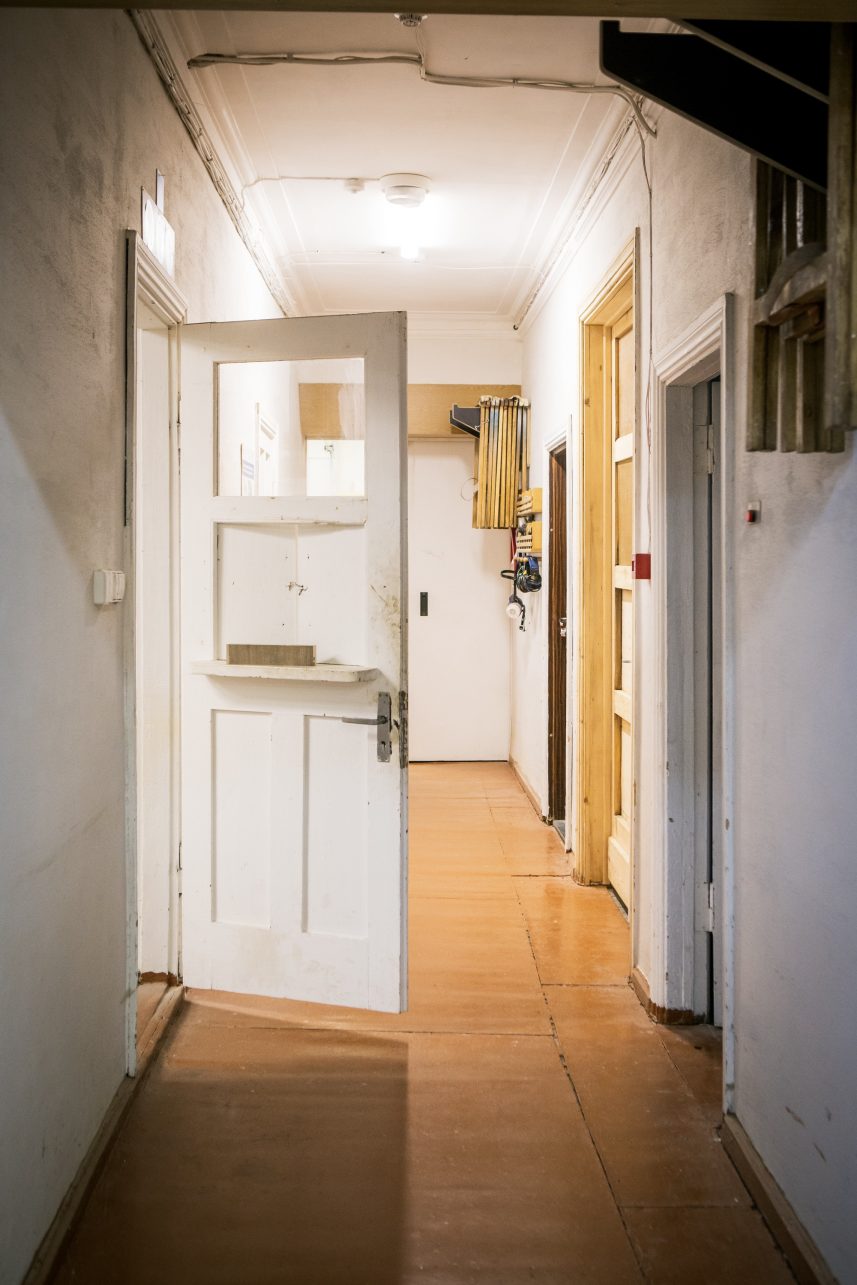
“It all started with training. And how to teach if you don’t know how? And then it started gathering momentum. In the beginning, I was freelancing, and then I founded a joint-stock company because without it I could not get a license for non-formal education. This is how restoration and work with the Employment Service came about,” the teacher recalls.
Experience is the best teacher
We don’t have a higher education program for wood restoration in Lithuania specifically, so the interviewee did not have many people to learn from. Kęstutis says that the best teacher when dealing with the historical relics of the city was and still is practice and reading. And, of course, the technical carpentry skills.
“We have furniture makers, Bangutis Prapuolenis now works in Telšiai. In addition, Vilnius has a great Pranas Gudynas restoration center. However, it was not widely common to restore carpentry i.e., windows and doors before. Previously, we did not see it as a great value,” K. Cikanas says.
Before Kęstutis got involved, the aforementioned R. Bertašiūtė was perhaps the first to organize specialized carpentry restoration training taught by Swedish masters. Later, they started to organize the training themselves. Anyone who wants to can watch the video material online if they think of restoring something themselves.
“Everyone knows Aleksandra Iljinienė’s house in Kaunas, on Donelaitis Street; I also worked there. One day I got a call and a caller said: we found a green color, and we are planning on painting it. I jumped up and rushed there because from my experience I knew that there were few such colors in that period. After looking more closely, we found the authentic solutions,” the carpenter recalls.
Worked in the most famous buildings of Kaunas
As I saw for myself, the artisan can tell the era of the manufactured door quite accurately even after licking a piece of old wood broken off with a scalpel. Only certain woodworking tools were used at a certain time period, for example, during the interwar period special oils that had a specific long-lasting aroma were used.
In addition to the aforementioned Art Deco and Amsterdam School museums, as well as Aleksandra Iljinienė’s house, Kęstutis Cikanas worked on other notable monuments of Kaunas’ modernist architecture. Often in these objects, you have to convince others of your knowledge, even though the plans are different at first.
“We were given the task of choosing the door and repainting it black again. If you were not the questioning type, you’d follow the orders, but architects don’t necessarily know everything. We have also received criticism for the metal surfaces. Some say we have recreated Soviet tin plates. Of course not, we delve deep, dissect the historical layers, and restore an object only to its authentic state.”
During the restoration process, Kęstutis mostly fights, as he says, for two things: color scheme and furniture fitting. If an original color motif is found, the aim is not to falsify history but to restore it along with small details that create an impression of authenticity.
The master admits that modern materials are also used in decoration. The main goal is for the restored object to be preserved and remain intact for as long as possible. Therefore, the materials used can be chosen more freely, taking into account modern technologies.
If you want to see or touch the doors and windows restored by the artisan from Kaunas, you can visit Sugihara’s house, the Military research laboratory for the Lithuanian Ministry of National Defense (now KTU), Algirdas Sliesoraitis’ house on Putvinskio Street and other places mentioned in the text.

